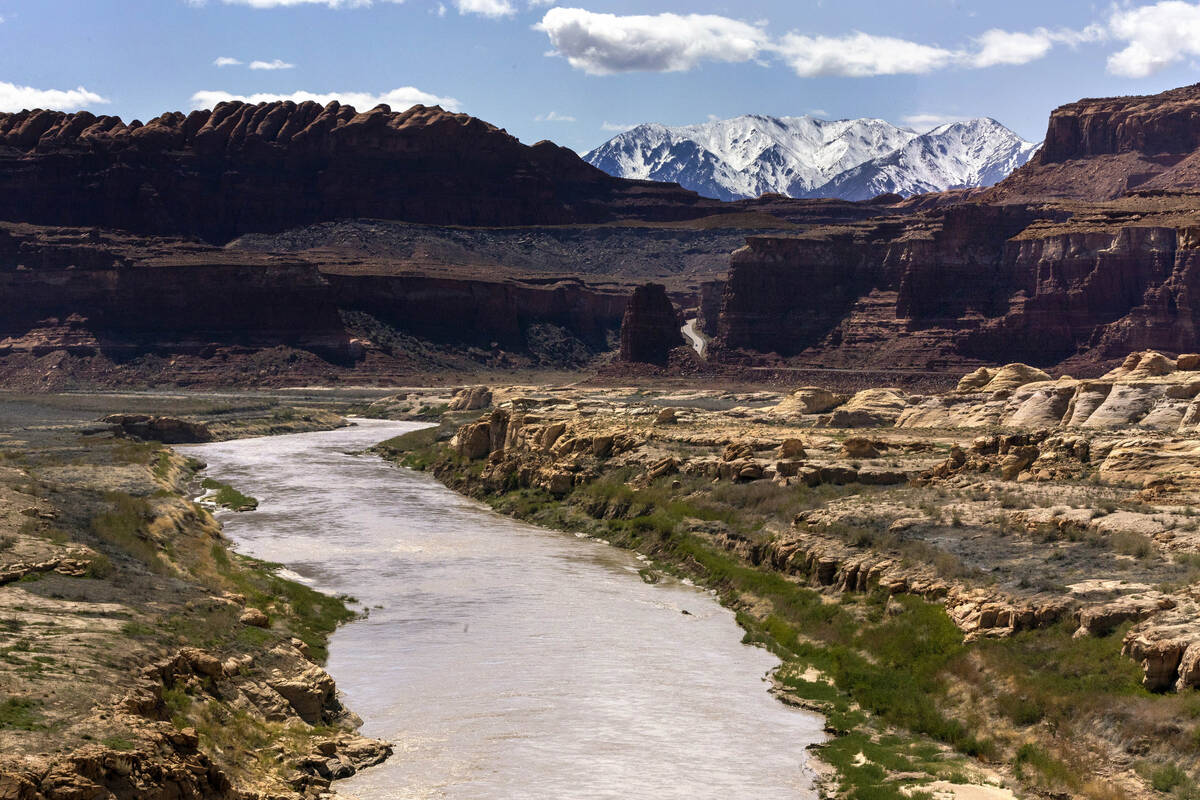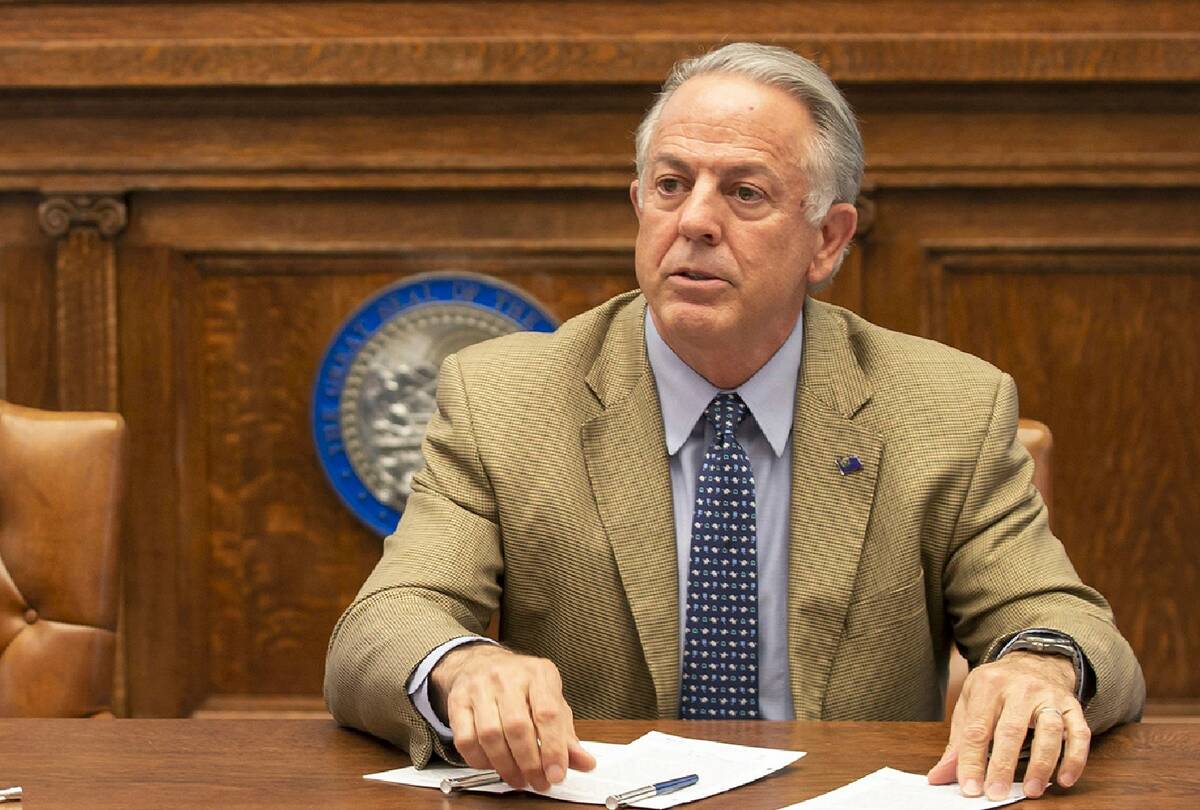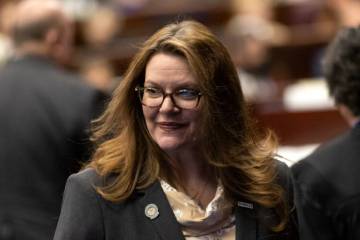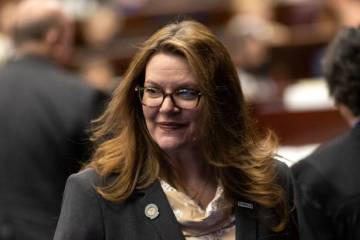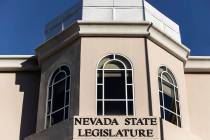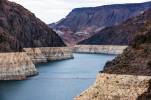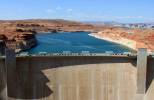Agency now has power to limit residential water use in Las Vegas
Las Vegas water managers now have the power to pinch the pipes of the valley’s biggest water users should things take a turn for the worse along the drought-stricken Colorado River.
Gov. Joe Lombardo on Tuesday signed Assembly Bill 220, giving the Southern Nevada Water Authority the ability to limit residential water use to as little as 0.5 acre-feet per year per home if the federal government slashes Nevada’s share of the Colorado River below a certain threshold.
Water authority officials have stressed that the restrictions allowed under the new law would not happen immediately, but may be needed if conditions along the Colorado River dramatically worsen and force the federal government to shrink Nevada’s share of the river.
“Nevada has long been a leader in implementing innovative water conservation efforts,” Lombardo said in a statement Wednesday. “This legislation builds on our efforts to protect sustainable growth on the county and state levels. I’m grateful for the Southern Nevada Water Authority’s leadership in advocating for measures to ensure the Las Vegas Valley has access to clean and stable water into the future.”
The measure makes Nevada the first state in the nation to give a local water agency the power to limit individual home water use and marks the next major step taken on Southern Nevada water officials’ quest to conserve the precious resource for the largest city in the nation’s driest state amid historic drought.
If the federal government were to reduce Nevada’s Colorado River allocation to 270,000 acre-feet or less, the new law would allow the Southern Nevada Water Authority’s board of directors to impose water caps on individual homes of as low as 0.5 acre-feet per year, or roughly 163,000 gallons.
The average home in Clark County uses roughly 130,000 gallons each year, according to water authority officials, and 80 percent of homes use less than 163,000 gallons each year.
“What AB220 does is give us the tools to continue to guarantee the water supply for all of the residents of Southern Nevada,” Southern Nevada Water Authority General Manager John Entsminger said in an interview.
Nevada normally gets 300,000 acre-feet of water from the Colorado River, which supplies roughly 90 percent of the Las Vegas Valley’s water. Under current drought agreements, the restrictions would only come into play if Lake Mead were projected to fall below 1,025 feet, a level that would trigger Nevada’s allocation of the river to be cut to 270,000 acre-feet.
But this past winter’s better-than-anticipated snowpack that’s expected to boost Lake Mead’s levels and the potential for voluntary water savings between Nevada, Arizona and California likely will prevent the reservoir east of Las Vegas from falling to those levels, at least in the near future.
Bipartisan support
The language of the bill does not detail exactly how restrictions would work if implemented. But Colby Pellegrino, the water authority’s deputy general manager for resources, told lawmakers that it would most likely involve a flow-limiting device, which would still allow water to flow into homes but at lower amounts.
In addition to giving the agency the power to limit residential use, the new law creates a system for septic tank users to voluntarily convert to the sewer system with costs covered by the government and gives municipal water suppliers in Southern Nevada like the Las Vegas Valley Water District more say at the onset of new housing development proposals, requiring those agencies to determine if water is available before the final map of a project can be approved.
The law was passed with bipartisan support and backing by several environmental conservation groups like the Sierra Club and Great Basin Water Network.
“AB220 foresees the difficult challenges ahead by providing clarity for the SNWA to act in difficult hydrologic scenarios on the river. The provisions that give the SNWA a greater say in approving or denying new developments and curbing valley water usage are long overdue. The bill is among the best options for ratepayers and taxpayers,” Great Basin Water Network Executive Director Kyle Roerink said in a statement Wednesday.
The restrictions allowed under the new law, if implemented, would affect the top 20 percent of water users in Clark County, according to the water authority. It was many of those customers who made up the vocal opposition to the bill in recent weeks, arguing that the measure was yet another levy on the Southern Nevadans living on half-acre and larger lots that typically use more water than smaller homes and apartment complexes.
Conservation measures
This year, the Las Vegas Valley Water District also implemented a new water rate structure that imposes excessive-use fees. The rate structure is aimed at curbing water use among the top 10 percent of water users and has resulted in monthly water bills increasing for some residents by several hundred dollars or more.
The top 10 percent of residential water users in the valley account for 30 percent of the water use, while the top 20 percent of residents account for about 45 percent of the use, according to the water authority.
“If you get into a situation where you have to ensure the health and human safety of 76 percent of the state’s population, you have to go to where the water is to get those savings,” Entsminger said.
Southern Nevada water managers have paid Las Vegas residents to swap out their grass lawns for drought-friendly landscaping. But as the 23-year Western United States drought has dragged on, water authority officials have become increasingly aggressive in their conservation measures in hopes of stretching the region’s small share of the river as far as it can, including advocating for a law in 2021 that outlawed nonfunctional turf in Las Vegas, capping the size of new pools, and shrinking the water budgets for golf courses.
Those measures have helped Las Vegas reduce how much Colorado River water it consumes over the last two decades, despite seeing the region’s population grow by roughly 800,000.
Assemblyman Howard Watts, D-Las Vegas, who sponsored the bill, said he hopes the law can stand as an example for how communities can push the envelope on reducing water use and spurring conservation.
“Nevada and Southern Nevada are taking the lead on urban water conservation measures, and I hope that it will continue to inspire other urban areas across the West to act, and to inspire other sectors to find ways to reduce their water footprint,” Watts said.
But Watts said that at some point, Las Vegas and other western cities will reach a point where they cannot continue to grow and reduce water consumption simultaneously.
Watts said he does not think it has to come down to such linear terms as having to only conserve water or completely limit the valley’s growth.
But conversations about smart, sustainable and managed growth are ones that need to be had, he said.
The sooner those conversations happen, Watts said, the better off Las Vegas will be.
Contact Colton Lochhead at clochhead@reviewjournal.com. Follow @ColtonLochhead on Twitter.



